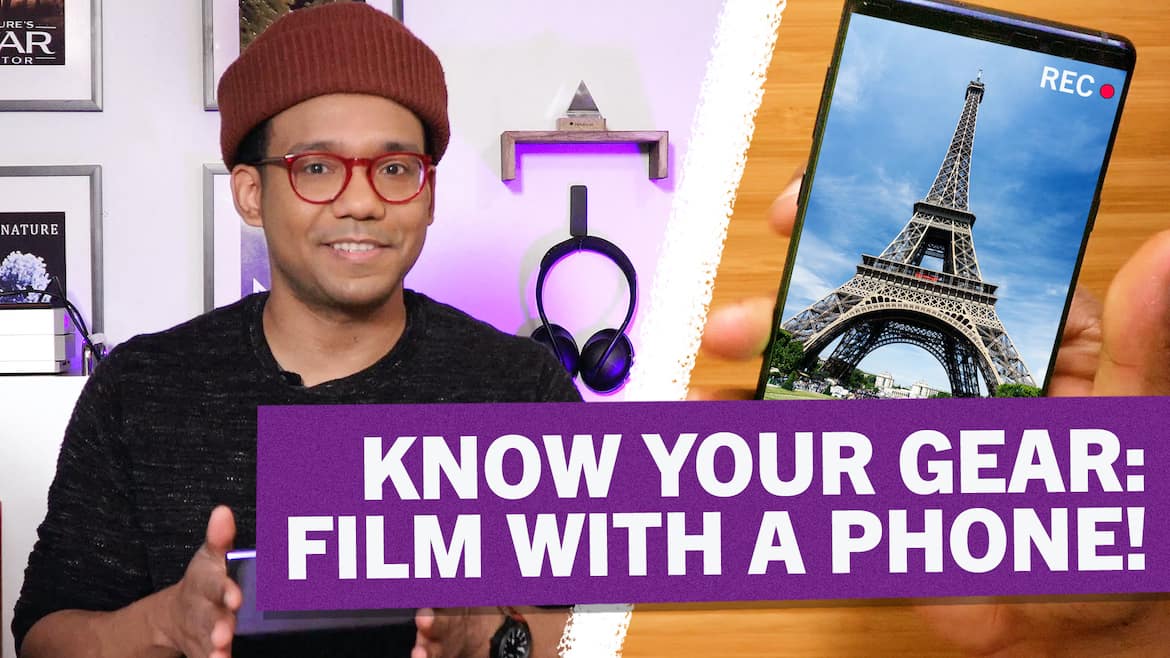With new program, ‘Nova’ hopes to inspire and diversify next generation of science communicators

GBH
A video tutorial used in the Nova Science Studio.
Public TV’s Nova announced in February its first national program designed to teach science journalism and video production to teens who are typically underrepresented in STEM fields.
The Nova Science Studio uses an interdisciplinary curriculum developed in-house to teach middle- and high-school students about science communication, video production and digital media literacy. By the end of the program, students will produce short videos about topics of their choice related to science, technology, engineering and math. The program seeks to include female students, those with disabilities, and certain racial and ethnic minorities.

The program’s nationwide launch follows a 2019 pilot in Boston, where the show is produced at GBH. Students made videos about topics including artificial intelligence and the impact of environmental toxins on human health. According to Tenijah Hamilton, the Science Studio manager, the program was inspired by an identified lack of adequate science communication programs for youth.
“In looking forward to the future and the next generation of science storytellers, NOVA is dedicated to better reflecting the true diversity in our society by creating a new pipeline for people and perspectives that have often been left out,” the show said in the introduction to the Boston pilot.
The virtual program, which began in January, consists of 30 students divided into five regional cohorts from the Northeast, Southeast, Midwest, Southwest and West Coast. The students were selected from a pool of roughly 90 candidates following a call for applications on social media in the fall, Hamilton said. Each cohort is led by a site coordinator with ties to the science communication field.
Originally, the program’s curriculum was structured for in-class use. After schools went virtual, Nova’s team made lessons more dynamic by including outdoor learning activities and adding more conversation-based lessons that push students to reflect and share their perspectives on a given learning topic.
“The impact of this global pandemic, which had real implications on the way that student programming was run, forced us to think about the ways that we could pivot from the traditional in-person model that the program initially was to a completely virtual national launch,” Hamilton said.

Niba Nirmal, the site coordinator for the West Coast and a multimedia science content producer, said she appreciates the flexibility of the curriculum. As the youngest coordinator in the program, Nirmal said she relates to many of her students’ online experiences and tries to make her lessons relatable.
Nirmal has altered lesson plans to include more relevant examples, memes and icebreaker activities she remembers enjoying as a student. She also noted the inclusion of “sensitive but important topics” in Nova’s curriculum, including conversations about race and gender equality.
One lesson addressed James Marion Sims, also known as the “father of modern gynecology,” and his use of enslaved Black women for surgical experimentation. “It sparked a lot of discussion about women’s rights and who gets to choose reproduction, and … where this idea of femininity comes from,” Nirmal said.
She added that while Nova’s curriculum sometimes initiates difficult conversations, it also strikes a balance between addressing difficult topics and ensuring that students are comfortable with discussing them.
The curriculum also features lessons on how to recognize and reject scientific misinformation on social media. These lessons, developed by misinformation experts, are complemented by the video series Misinformation Nation. The series, produced by Nova Digital Video Producer Alex Clark, addresses issues such as how mask-related misinformation spreads and how misinformation influences human behavior.
The program is optimized to accommodate varying levels of access to technology. According to Hamilton, some videos may be shot on phones or tablets, while other students may use more advanced camera and microphone setups.
“… We really think helping students to get familiar with the devices they already have will lower the barrier of access for students wanting to participate in the program, and then ultimately it will allow for a broader range of stories and diversity in the voices that tell them,” Hamilton wrote in an email.
Although students are still in the learning phase of the program, Hamilton said they will start choosing their groups and video topics soon. The final products will be published on the Nova Science Studio YouTube channel in July.





